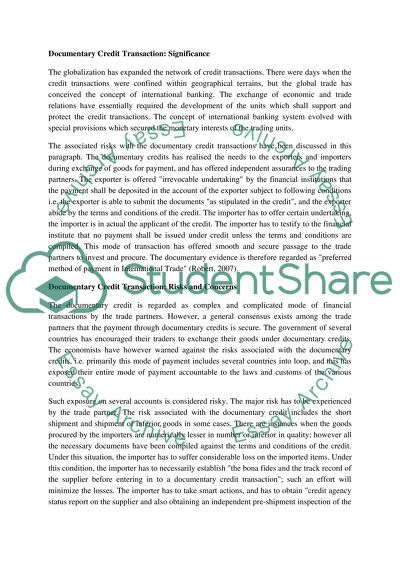Cite this document
(“Documentary Credit Transaction Essay Example | Topics and Well Written Essays - 2250 words”, n.d.)
Documentary Credit Transaction Essay Example | Topics and Well Written Essays - 2250 words. Retrieved from https://studentshare.org/miscellaneous/1534595-documentary-credit-transaction
Documentary Credit Transaction Essay Example | Topics and Well Written Essays - 2250 words. Retrieved from https://studentshare.org/miscellaneous/1534595-documentary-credit-transaction
(Documentary Credit Transaction Essay Example | Topics and Well Written Essays - 2250 Words)
Documentary Credit Transaction Essay Example | Topics and Well Written Essays - 2250 Words. https://studentshare.org/miscellaneous/1534595-documentary-credit-transaction.
Documentary Credit Transaction Essay Example | Topics and Well Written Essays - 2250 Words. https://studentshare.org/miscellaneous/1534595-documentary-credit-transaction.
“Documentary Credit Transaction Essay Example | Topics and Well Written Essays - 2250 Words”, n.d. https://studentshare.org/miscellaneous/1534595-documentary-credit-transaction.


